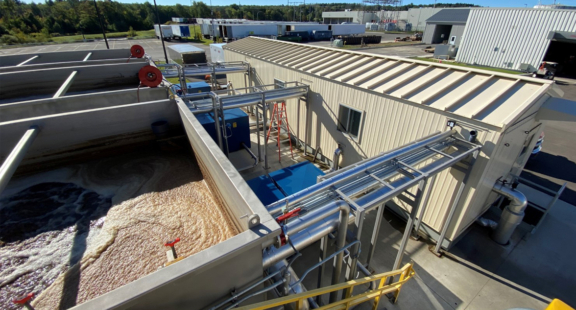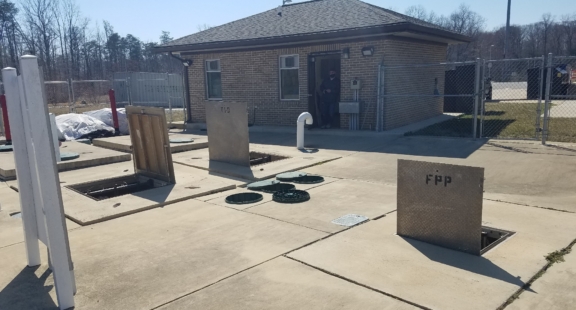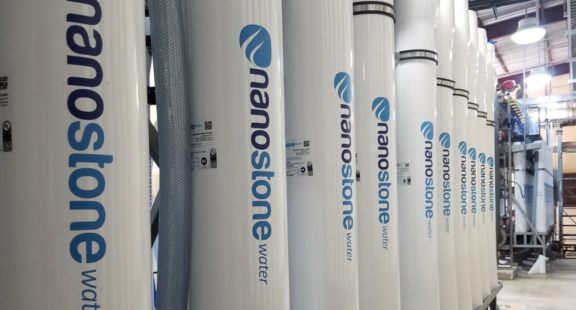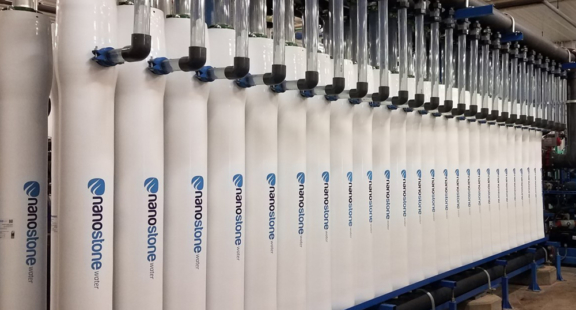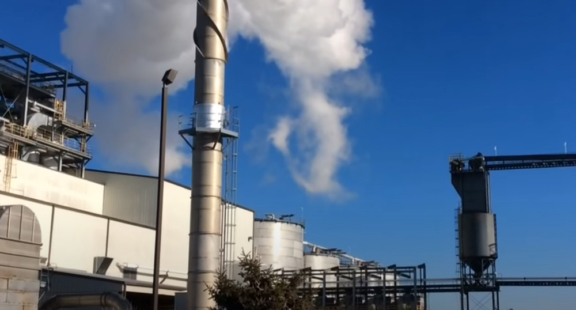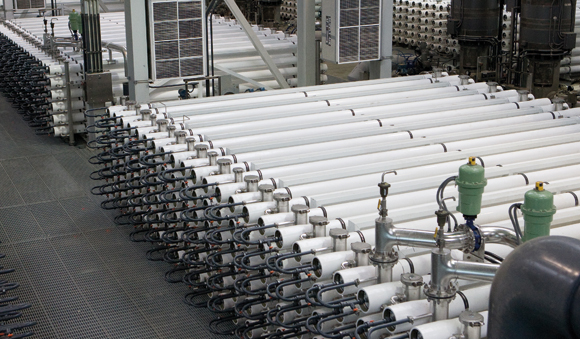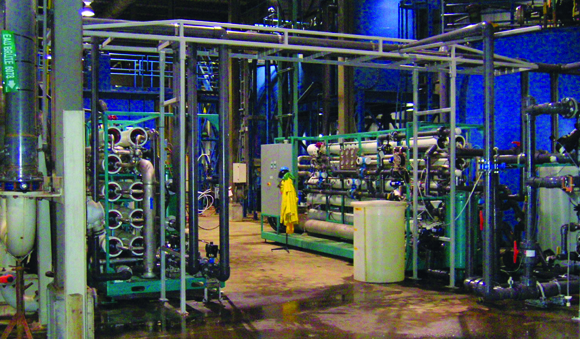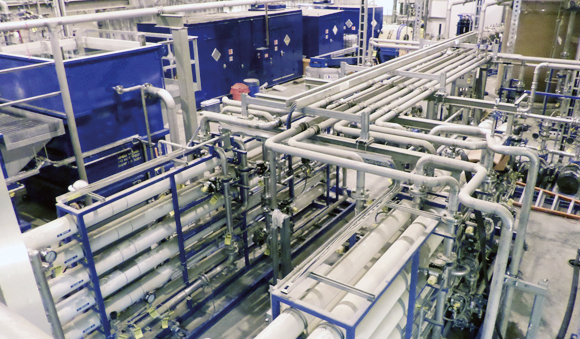Ceramic Membrane System
Ceramic membranes have been increasingly used in industrial contexts for their ability to produce high-quality water filtration. Although they have traditionally been rather costly, recent innovations have made them much more competitive. Reliable and robust, ceramic membranes operate with little down time and require low operational expenditure. Their long membrane lifecycle also reduces waste, making them environmentally friendly, an invaluable benefit considering H2O Innovation’s desire to address water-related problems in the most sustainable way possible. H2O Innovation works with submerged and pressurized ceramic membranes, and builds systems with membranes from MEIDENSHA, NANOSTONE and CERAFILTEC.
Submerged
As the name suggests, submerged ceramic membranes are immersed within process water in a tank. The water in the tank is drawn into the membranes by suction and particles are left behind. These solids are removed from the tank through a waste stream. Submerged membranes allow the retrofit of existing systems and can use existing tankage to minimize the cost of infrastructure for system expansions.
Submerged systems have a higher solids tolerance than pressurized systems.
Pressurized
Pressurized ceramic membranes are installed within modular vessels. Water is pumped into these vessels (or modules), and the feed pressure pushes the water through the ceramic membranes, leaving particles on the feed side. The particles are removed by draining the vessels periodically.
Pressurized membranes eliminate the need for tanks and can be installed within a process building.

In conjunction with developed pre-treatment processes, such as an active cake layer filtration for a selective removal of dissolved ions, CERAFILTEC’s ceramic flat sheet membrane solution provides a high-quality pre-filtration solution for all NF and RO applications. The modular configuration of these submerged ceramic membrane filters makes them highly versatile and reliable.
Submerged ceramic membrane benefits
- Less filter area needed due to high flux operation – high CAPEX savings
- Suitable for seawater and other challenging applications without any risks of corrosion problems
- Operation at high temperature
- Fully modular due to no surrounding frame – option to change number of modules per tower at any time either to optimize project costs or to increase the plant capacity in future
- Most compact design – towers can be installed in close distance to each other as no hoses are needed
MEIDENSHA Ceramic Flatsheet Membrane System
The ceramic flatsheet technology developed by Meidensha eliminates any potential issues that can be encountered in hollow fiber polymeric applications, such as fiber breaks, pin holes, abrasion, etc. These membranes are perfectly suited for very difficult effluents that are abrasive and/or contaminated with oil and solvents. The Meidensha product is particularly versatile and can be used in less complex applications, such as municipal membrane bioreactors (MBR), and to address frequent wastewater problems. This membrane is NSF419 certified and can also be used for drinking water applications as the first and only step of treatment or to enhance overall water recovery for backwash waste recycling.
Benefits:
- Multipurpose – These membranes can be used in a multitude of applications, from drinking water to the most difficult industrial waste.
- Robustness – They are highly resistant to solids, abrasion, and chemical damage.
- High recovery – They have a significantly higher recovery compared to polymeric systems, with typical numbers in the 98-99% range versus 90-95% for polymeric membranes.
- Energy saving – Reduced fouling leads to lower transmembrane pressure, lower pumping costs, and lower chemical cleaning costs. Higher recoveries lower feed water pumping costs and air scour costs.
NANOSTONE CM-151* Technology
The NANOSTONE CM is a large area monolith-type ceramic UF module as a finished product, but it is not made like any other ceramic membrane. A major breakthrough in product cost reduction is the high-speed extrusion and firing process of the individual ceramic segments. For more efficient backwashing, the space between the segments provides permeate conduit through the length of the module.
Pressurized ceramic membrane benefits:
- 3-10 times higher flux
- High suspended solids tolerance
- High chemical resistance
- Ability to recover permeability
- More consistent permeate quality
- Ease of maintenance

